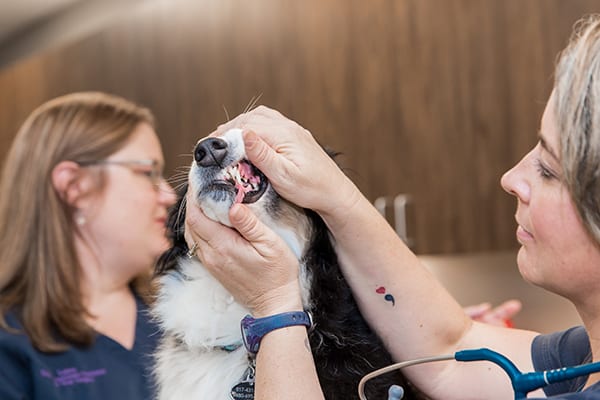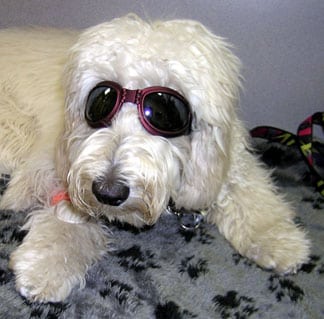Advanced Veterinary Periodontics
Periodontal disease is one of the most common diseases affecting dogs and cats over age 3. However, it is easily preventable with routine dental care at home and periodic oral exams and professional teeth cleanings by a qualified veterinarian or veterinary dentist. Veterinary periodontics is the treatment of periodontal disease, which causes symptoms such as bad breath, tooth discoloration, and red, swollen gums. In more severe cases, this disease can spread the infection to the heart, liver, and kidneys. Call us today at (817) 431-8451.

The Stages of Periodontal Disease
Bad breath is a sign of poor oral health and should be addressed promptly. Untreated, periodontal disease can do lasting damage to your pet’s mouth and overall health. Which stage is your pet currently in?
- Normal: Teeth are healthy and require a standard professional cleaning under anesthesia
- Gingivitis: Gums become red, swollen, and painful
- Early Periodontitis: 0-25% bone loss seen with radiographs
- Moderate Periodontitis: Greater bone loss is evident with radiographs and extractions may be needed. Some teeth may be saved with timely intervention but this is not a guarantee. Moderate bone loss is also evident when the root can be seen above the gum line.
- Advanced Periodontitis: Significant bone loss, loose teeth, and bright red gums are common at this stage. Your pet will likely have difficulty eating properly and may even show signs of weight loss. Many pets are stoic and may not show any signs of pain. Extractions are needed to remove the infection, reduce pain, and improve your pet’s health.
Common Symptoms
- Bad breath
- Heavy drooling
- Pulling away or growling/snapping when you try to check their mouth
- Swollen, bright red gums, even bleeding from gums or mouth
- Visible tooth roots, which should normally be covered by surrounding bone and gums
- Mouth ulcers
- Rubbing face/muzzle with a paw or on furniture
- Decreased activity
- Sleeping more often
- Difficulty eating/holding onto food

Periodontal Disease Treatment
Oral Exam and Radiographs
We need to examine your pet and assess their current condition. If tartar is present on your pet’s teeth and they are showing other telltale signs, full-mouth radiographs and a complete oral exam are necessary. Radiographs help us visualize the tooth roots and surrounding bone to evaluate their condition and detect damage. We also need to probe the pockets around the teeth to check for bone loss and gum detachment. For us to perform a thorough, full-mouth exam and radiographs, your pet must be placed under anesthesia.
Removing the Infection
Loose, broken, and/or decayed teeth need to be extracted. Following extraction, we focus on cleaning the remaining teeth and eradicating the infection. Scaling removes tartar and plaque that have built up above and below the gum line. Root planing involves smoothing the tooth roots to help the gums reattach to the teeth. All pets must be under general anesthesia for our specialists to safely perform these procedures and effectively treat periodontal disease.
After Care
Helping your pet maintain a clean, healthy mouth is vital to preventing further bone and tooth loss. It also spares your pet from having to suffer from swollen, painful gums and loose teeth. We advise daily brushing along the gum line, a dental care diet to slow plaque buildup, and routine professional dental cleanings.
We Can Help You
Whether you are a concerned pet owner or a veterinarian seeking periodontal therapy for a patient in need, our specialists are happy to help. Their years of experience in veterinary dentistry and access to superior dental technology give them the ability to diagnose and treat a wide range of oral problems. Call (817) 431-8451 to request more information about veterinary periodontics or schedule a consultation.




